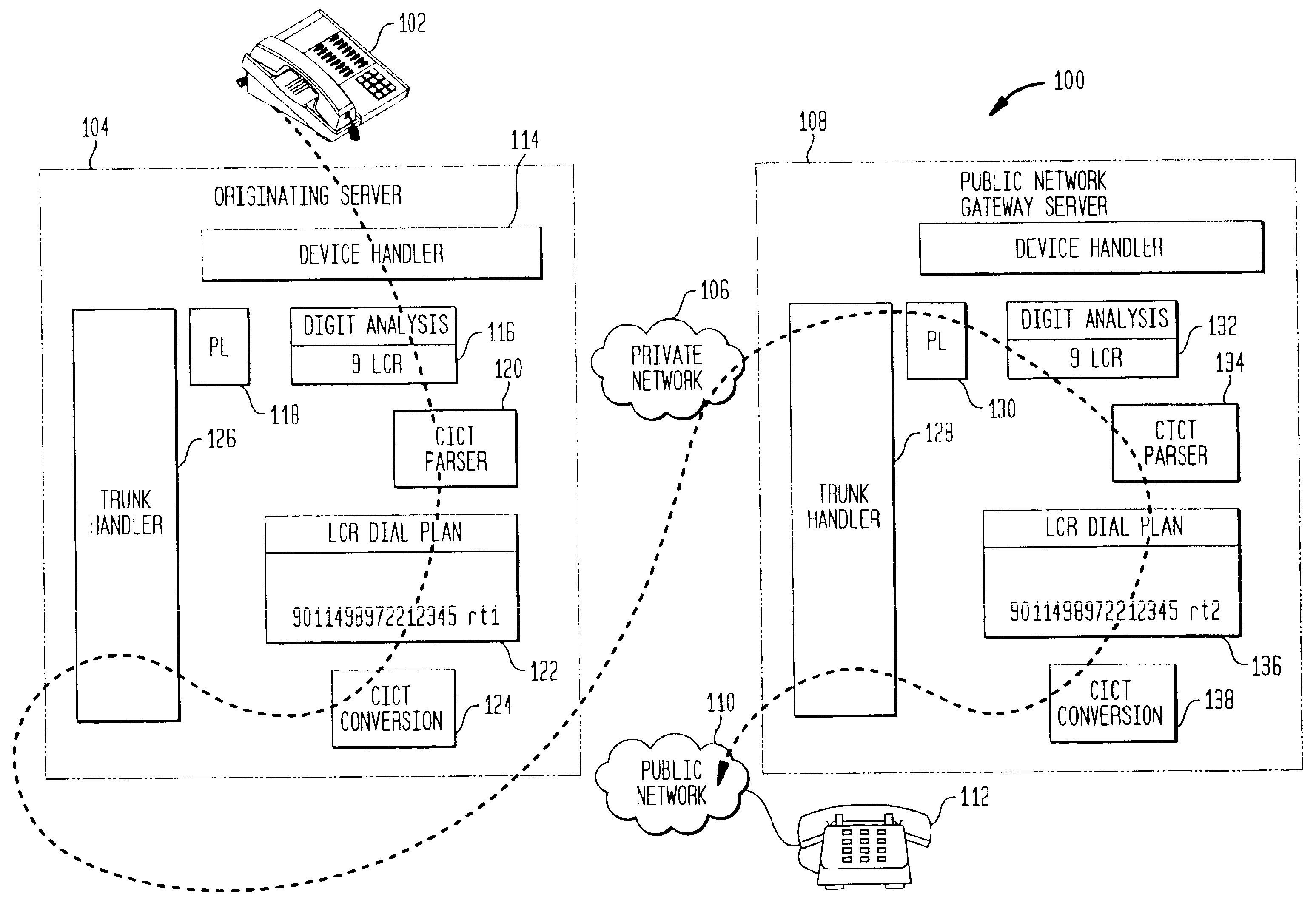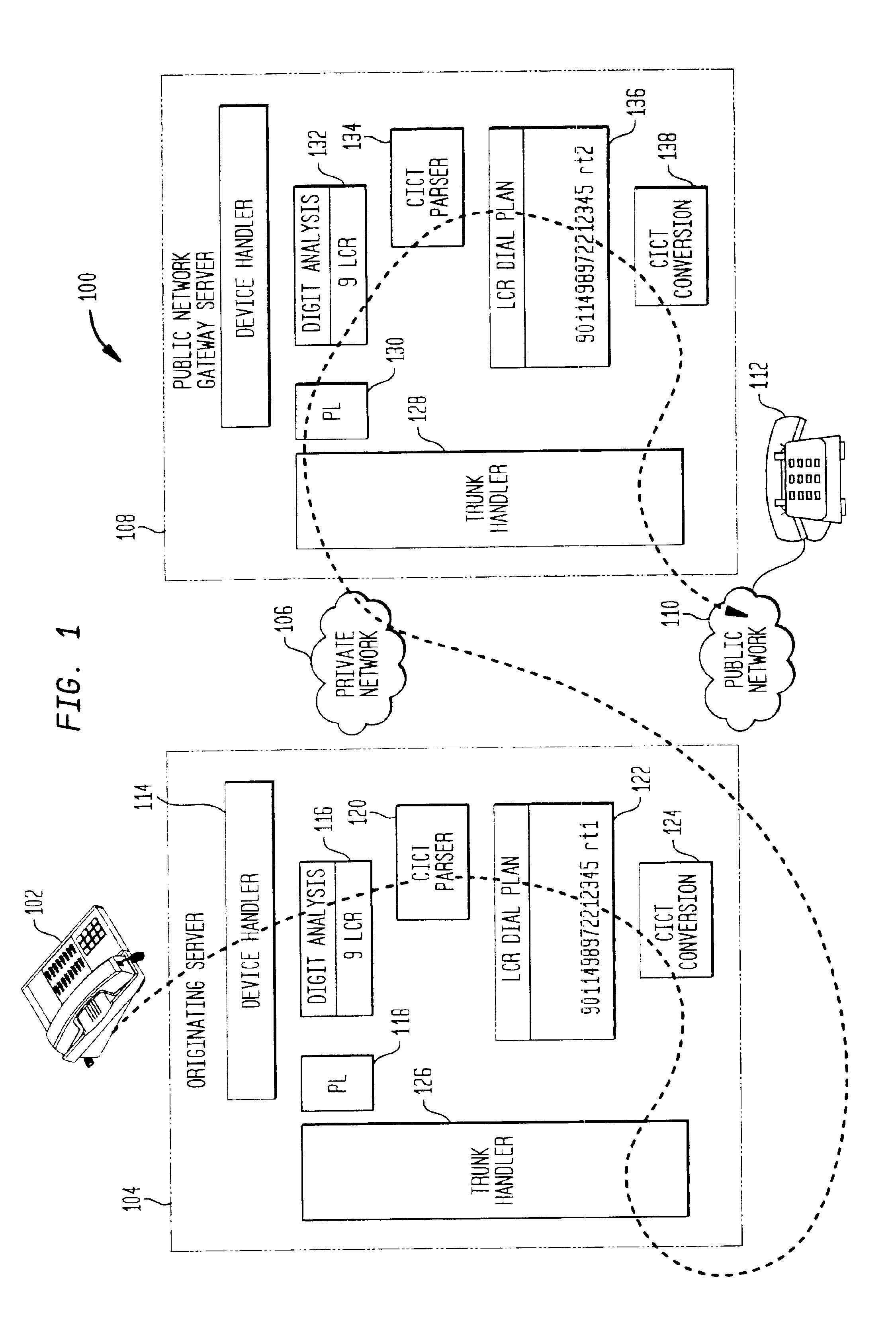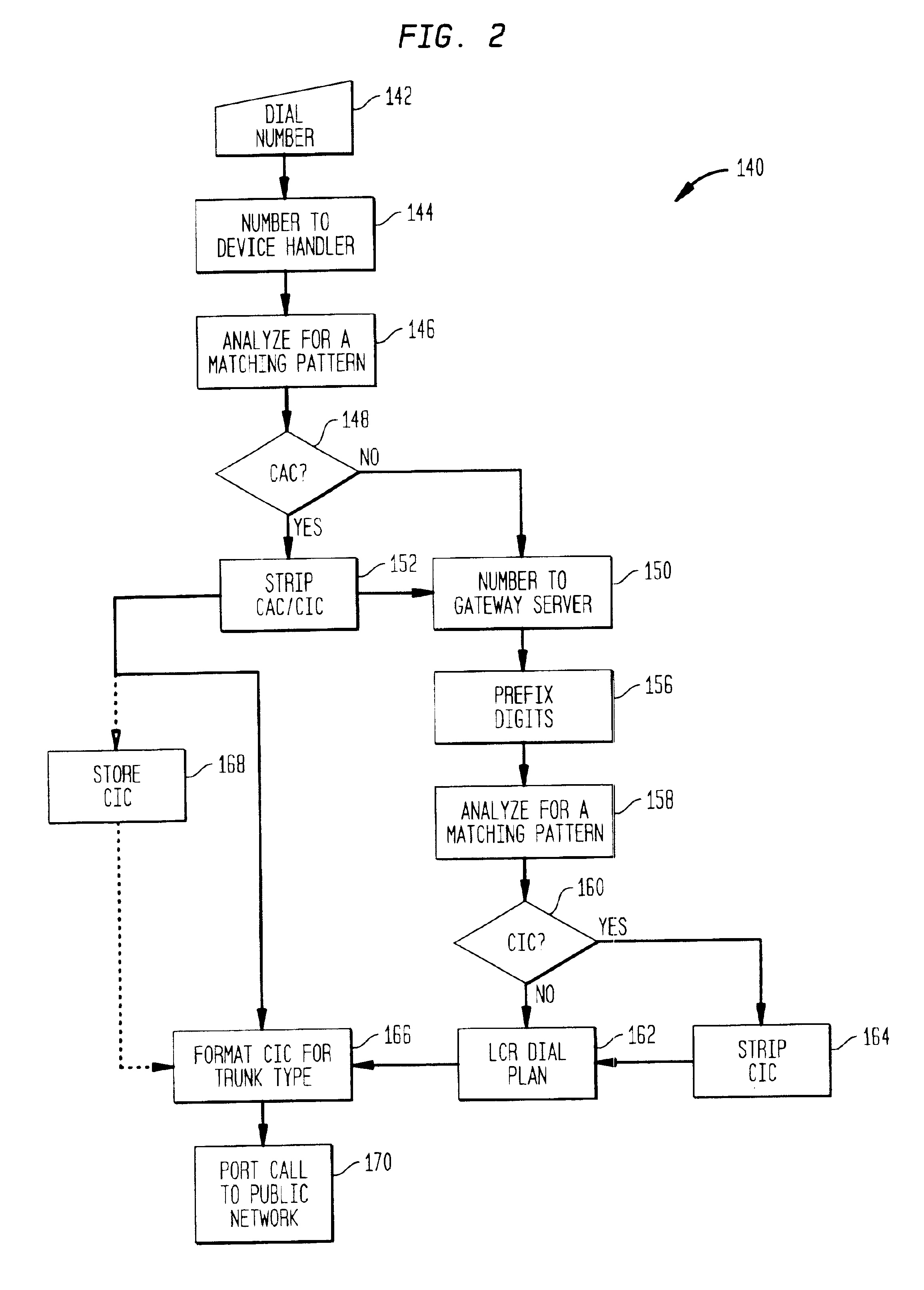Carrier identification codes (CIC) transport
a carrier identification and code technology, applied in the field of communication networks, can solve the problems of mis-routing the call, truncating the digit string, and affecting the service life of the carrier, and achieve the effect of reducing the occurrence of misdirected calls
- Summary
- Abstract
- Description
- Claims
- Application Information
AI Technical Summary
Benefits of technology
Problems solved by technology
Method used
Image
Examples
Embodiment Construction
[0016]FIG. 1 shows an example of a communications system 100 according to a preferred embodiment of the present invention. In this example, one or more communications devices 102 are connected to a communications server 104. Each communications server 104 is connected to a private network 106 and through the private network 106 to one or more public network gateway server 108. Each public network gateway server 108 is connected to a public network 110, which typically has multiple connected public users 112.
[0017]The communications server 104 includes a device handler 114 handling connected communications devices 102. A digit analysis unit 116 receives incoming sequences of digits or digit strings from the device handler 114. A prefix logic unit 118 assists in digit analysis. The digit analysis unit 116 recognizes any digit sequence beginning with “9” as a call to be routed to a least cost routing (LCR). A carrier identification code transport (CICT) parser 120 receives an incoming ...
PUM
 Login to View More
Login to View More Abstract
Description
Claims
Application Information
 Login to View More
Login to View More - R&D
- Intellectual Property
- Life Sciences
- Materials
- Tech Scout
- Unparalleled Data Quality
- Higher Quality Content
- 60% Fewer Hallucinations
Browse by: Latest US Patents, China's latest patents, Technical Efficacy Thesaurus, Application Domain, Technology Topic, Popular Technical Reports.
© 2025 PatSnap. All rights reserved.Legal|Privacy policy|Modern Slavery Act Transparency Statement|Sitemap|About US| Contact US: help@patsnap.com



